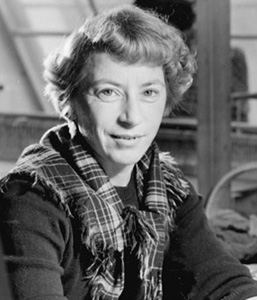
Viola Hildegard Gråsten was a Swedish textile designer.

Astrid Sampe was a Swedish textile designer who for a large part of her professional life was affiliated with the textile department at Nordiska Kompaniet but also worked for several other textile producers.

Hanna Mathilda Winge, née Tengelin was a Swedish painter and textile artist. She was one of the five founders of the Swedish women's association Nya Idun.
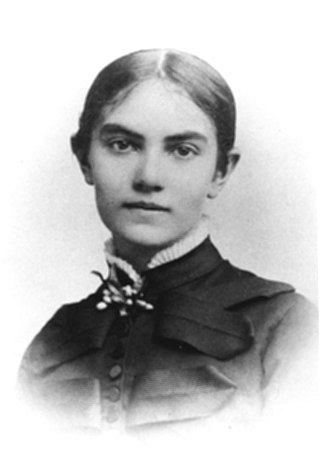
Karin Larsson, née Bergöö, was a Swedish artist and designer who collaborated with her husband, Carl Larsson, as well as being often depicted in his paintings.

Louise Nathalie Adelborg was a Swedish porcelain designer and textile artist.
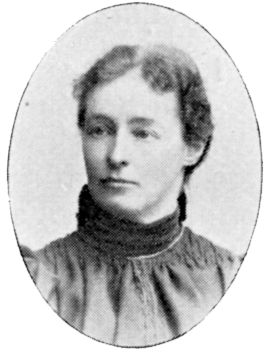
Eleonara Amalia Maria Adelborg was a Swedish textile artist. She is best known for preserving Swedish textile art traditions. Her works include the carpet in the Birgitta Chapel in Rome and the chasubles for the Sofia Church in Stockholm.
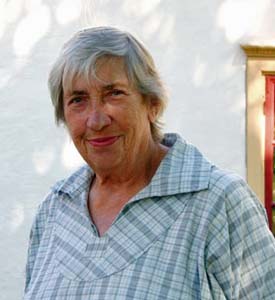
Edit Gunilla Margareta Lagerbielke (1926–2013) was a Swedish textile artist who exerted considerable influence on arts and crafts in Sweden as a result of her heading Konstfack and chairing the Swedish Arts Grants Committee. She is also remembered for the textile works she created with her husband Lars Johanson which were exhibited in Gothenburg in 1970.

Elsa Maria Giöbel-Oyler (1882-1979) was a Swedish painter.

Cilluf Olsson was a Swedish textile artist. She was an important figure within Svensk Hemslöjd.
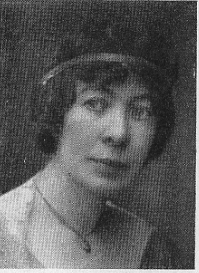
Emy Oscaria Charlotte Fick née Kylander (1876–1959) was a Swedish textile artist, educator and fashion designer. After completing her education with study trips to Italy, France and Germany, she returned to Stockholm where she worked with textiles in the Nordiska Kompaniet department store. While there, she met Elisabeth Glantzberg with whom in 1910 she established Birgittaskolan which not only offered courses but served as a fashion studio where textiles could be ordered. After breaking up with Glantzberg in 1914, Fick set up her own business which she called Santa Birgittaskolan. From the late 1920s, the company became recognized for its tapestries. After closing the establishment in the mid-1930s, Fick moved to Östergötland with her large collection of lace, clothes and furniture which she left to Östergötland Museum.

Emma Carolina Helena ("Lilli") Zickerman (1858–1949) was a Swedish textile artist who pioneered the Swedish Handicraft Association in 1899. In 1914, she embarked on the creation of an inventory of popular textile art in Sweden, documenting some 24,000 items with photographs and samples of threads by 1932.
Marianne Elisabet Richter Lindroth (1916–2010) was a Swedish textile artist who from 1942 was engaged as a designer at Märta Måås-Fjetterström's workshop. There she produced flatweaves, pile rugs and tapestries. She is remembered in particular for her rya rugs and her large wall hangings. Her patterns have since become classics in Swedish textile arts.

Thora Kulle née Nilsson (1849–1939) was a Swedish textile artist who specialized in weaving. In 1880, together with her brother-in-law, she opened a weaving school in Lund which developed into a textile retail business with several branches, including one in Stockholm. Her work attracted significant attention at the Copenhagen's Nordic Exhibition in 1888. At the Paris World Fair in 1900, she was a awarded a gold medal.

Sigrid Maria (Maja) Andersson Wirde (1873–1952) was a leading Swedish textile artist in the first half of the 20th century. From 1907, she worked for 20 years as a pattern designer for the Friends of Handicraft or Handarbetets Vänner in Stockholm where she created large carpets for Stockholm City Hall and textiles for the transatlantic liner MS Kungsholm. In 1929, she moved to the United States to work for the Cranbrook Academy of Art in Detroit, producing high-quality fabrics and carpets for the newly built Kingswood Girls' School. In 1933, she returned to Sweden where she opened a textile business in her native Algutsboda, employing some 20 embroiderers and weavers to create textiles for churches.

Carin Helena Wästberg (1859–1942) was a Swedish textile artist who helped to revive interest in textile arts in Sweden inspired by local peasant techniques and the developments she had seen in England. As its leader from 1904, she developed the Friends of Handicraft association into the country's top textile producer, creating a new production technique in collaboration with Maja Sjöström. Under her leadership, the association produced many notable works for public buildings in Stockholm, including those she herself designed in 1915 for the Stockholm Court House.
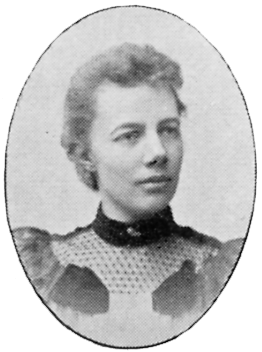
Agnes Margareta Matilda Branting (1862–1930) was a Swedish textile artist and writer. As director of the Friends of Handicraft association from 1891, she undertook developments in large woven tapestries with several prominent artists which led to Sweden's freestyle woven visual art. In 1904, she established the Licium workshop which produced religious and heraldic fabrics including flags and banners. She was also active in the preservation of textiles, establishing the Pietas society for this purpose. As a writer, she contributed articles on arts and crafts to Svenska Dagbladet and published books on textiles.

Gunnel Gunnarsdotter Hazelius-Berg née Hazelius (1905–1997) was a Swedish museum curator, textile researcher and writer. She spent her entire professional career at Stockholm's Nordic Museum. As the director responsible for textiles, over the years she arranged several highly acclaimed exhibitions. Hazelius-Berg took a special interest in traditional Swedish costumes. Together with her daughter-in-law Inga Arnö-Berg, in 1975 she published Folkdräkter och bygdedräkter från hela Sverige which was translated into English as Folk Costumes of Sweden: A Living Tradition.

Hanna (Anna) Maria Sahlström (1876–1956) was a Swedish painter and graphic artist. In 1905, she began studying under Richard Bergh and Karl Nordström at the school run by the Artists' Association (Konstnärsförbundet), later developing expertise in woodcuts under Tekla Nordström. By 1911, she could exhibit her work in Gothenburg and at the Art Academy. Emulating Paul Gauguin and Wassily Kandinsky, she adopted an abstract, stylized approach. Sweden's Nationalmuseet has 15 of her woodcuts in its collection.
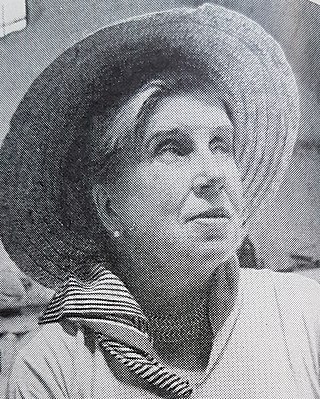
Tyra Carolina Lundgren was a Swedish painter, ceramist, glass and textile designer, and writer. One of the most versatile artists and modernists of the 20th century, Lundgren was the first woman to design glass for Paolo Venini, and emerged as a pioneer of the Swedish Grace style. In 1950, she was awarded the Swedish royal medal Litteris et Artibus in recognition of her artistic career.

Nya Idun is a Swedish cultural association for women founded in 1885, originally as a female counterpart to Sällskapet Idun. Its aim was to "gather educated women in the Stockholm area for informal gatherings".


















